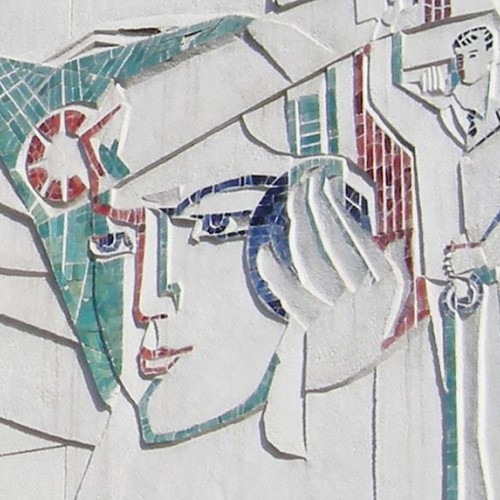Tashkent's spectacular mosaics
The removal of billboards covering the traditional mosaics on the facades of buildings in the Uzbek capital has become a popular event at publicity festivals. While the Council of Ministers approved a decree to include them in the list of monumental art objects to be preserved.
Tashkent (AsiaNews) - The event of the liberation of mosaics on the walls of buildings in Tashkent, which were hidden by billboards, has already won two social advertising festivals, the Georgian AdBlackSea and the Kazakh Red Jolbors.
The Uzbek event is called Mosaicvertising, organised by the khokimat (town hall) of the capital of Uzbekistan. At the creativity festival in Batumi, Georgia, last September, Mosaic won the Grand Prix and the gold medal in the Media classification, in the Use of Print and Outdoor sector where 119 projects took part, with the prize being a work of art made from plastic collected on the beaches of the Black Sea.
The AdBlackSea festival has been held regularly since 2015, and is very popular among business and marketing specialists. The winners of the various editions include other projects from Uzbekistan, but also from Slovenia, Bulgaria, Armenia, Azerbaijan, Kazakhstan, Georgia and other countries.
At the most recent event in Kazakhstan, Mosaicvertising won three gold medals in the Pr Campaign, Esg Projects, Reputation & Behavioral Communication rankings, and three bronze in the Media Campaign, Print & Outdoor and Brand Experience & Activation rankings. All in all, the Tashkent Mosaics were called ‘the heroes of the festivals’ by all.
Uzbekistan's great success was possible as a result of the collaboration of state institutions and private organisations, one of the most reiterated motives of President Šavkat Mirziyoyev's policy, also bringing together many civil associations mobilising citizens enthusiastic about the ‘liberation’ of façades and the popularisation of traditional mosaics. A collaboration that the khokimat assures was born spontaneously and not artificially, as a ‘united mission of love for the city and its popular art’.
At the initiative of the Fund for the Development of Culture and Art, and the Cultural Heritage Agency, the mosaics were included in the list of Uzbekistan's heritages, and the municipal department for digital development created a special site for the mosaics, with additional animation and additions created by artificial intelligence.
The event was developed thanks to the marketing agency Lokals Central Asia and the payment service Payme, with authors of musical compositions resonating in the presentation videos by the collective Luod373 & Vagan. At the head of the Mosaicvertising information service was publicist Fotima Abdurakhmanova, the initiative's first supporter for years.
According to the khokimat press office, the removal of the billboards covering the mosaics was completed in June after more than two months of work, concluding a process that had begun in 2021 and had resulted in the dismantling of dozens of billboards and finally freeing more than 200 painted facades.
In March, Uzbekistan's Council of Ministers had approved a decree to include the mosaics of Tashkent and other Uzbek cities in the lists of monumental art objects to be preserved.
Most of them are located in the Almazar and Šajkhantakur districts of the capital, and the final catalogue contains information on nearly 500 mosaics, including several dozen that have been lost, but of which visual evidence and other documentation is preserved.
07/02/2019 17:28







.png)











